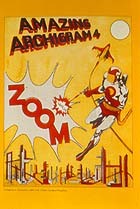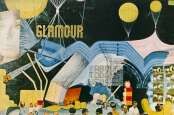
Modernism prevailed in architecture since the post-First World War era, in the visions of such people as Le Corbusier, Bauhaus and Functionalists; and by the 1960s this ascetic approach had developed into the minimalist, massive and menacing -- at its worst even post-Stalinist totalitarian -- style of the slabs of concrete, in what was called "Brutalist architecture". Combined with the technocratic city-planning, often manipulated by greedy and corrupt real estate deals, this was the style that prevailed all over the world, as the architecture of earlier eras was often ruthlessly erased and demolished to give way to the box-shaped steel and concrete office buildings and suburban apartment houses of element blocks. (My own hometown Tampere can well be called another example here, when several "wars" were waged over in the 60s and 70s to save such idyllic late 19th century/early 20th buildings as the City Hall or the Old Market Hall, threatened by an impending demolition in the hands of technocratic City Fathers.)
This autocratic dogmatism of Modernism/Brutalism was now challenged by architects who respected more the organic, evolutionary aspects of the city. Perhaps the most inventive and influential thinkers in this vein were the members of Archigram, a group of British architects that got together in the early 1960s through the Architectural Association in London; comprising Warren Chalk, Peter Cook (no relation to the era's famous British comedian of the same name), Dennis Crompton, David Green, Ron Herron and Michael Webb. Archigram's ideas were expressed in imaginative, often playful fantasy projects and colourful collages in "pop" spirit, which were published on the pages of their eponymous journal launched in 1961. Many of Archigram's designs were actually never meant to be realised as finished buildings, only as joyful simulations of what architecture could perhaps be in some possible but distant future, such as Roy Herron's "Walking City" of 1964: with an outlandish idea of a city that could be moved on its mechanical legs from one area to another!
Archigram were influenced by science fiction, comic books and other popular culture, engineering, and generally taking ideas from outside their own medium to find new approaches for architecture. In Amazing Archigram 4 Zoom Issue of 1964 Warren Chalk wrote: "In this second half of the twentieth century, the old idols are crumbling, the old precepts strangely irrelevant, the old dogmas no longer valid. We are in pursuit of an idea, a new vernacular, something alongside the space capsules, computers, and throw-away packages of an atomic and electronic age".
Bibliography:



click for larger image



No comments:
Post a Comment